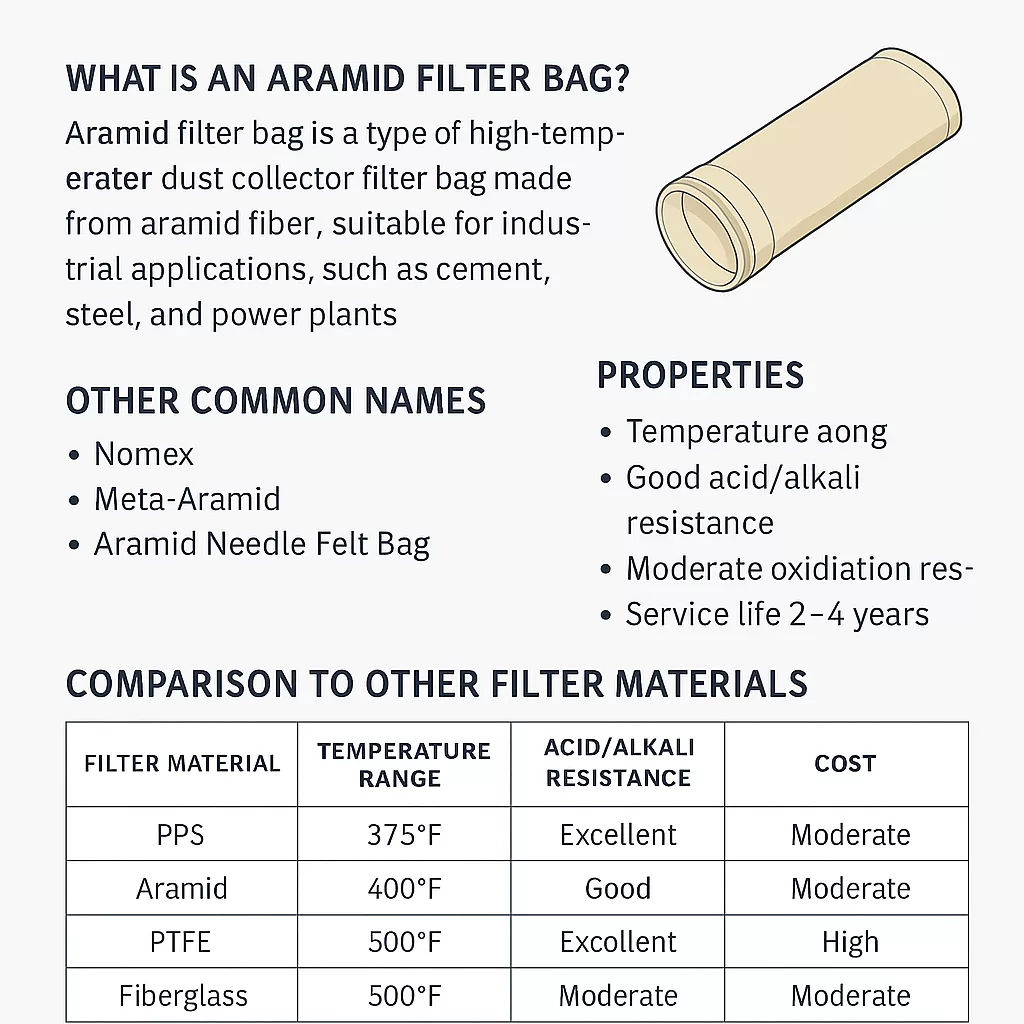By Omela Filtration — Industrial Filtration Experts
In pulse-jet dust collector systems, even a single damaged filter bag can compromise the entire operation. If a baghouse filter bag tears, unfiltered dust escapes into the clean-air plenum and downstream ductwork. This causes:
Traditional methods — visual inspection or monitoring differential pressure — often fail to detect small leaks. This is where a triboelectric broken bag detector provides a more accurate early-warning solution.
A triboelectric sensor operates on a simple physical principle:
When dust particles move through a metal probe, they generate an electrical charge from friction (triboelectric effect). The more particles present, the stronger the signal.
Unlike opacity monitors or pressure readings, triboelectric sensors can detect extremely fine particles — even before visible emissions occur — making them highly effective in identifying early-stage filter failure.

| Detection Method | Can Detect Small Leaks? | Response Time | Maintenance Needed | Suitable for High-Temperature or Harsh Dust? |
|---|---|---|---|---|
| Differential Pressure | No | Slow | Low | Yes |
| Visual Inspection | Only large leaks | Delayed | High | No |
| Opacity Monitor | Moderate | Moderate | Medium | Limited |
| Triboelectric Detector | Yes — very small leaks | Immediate (seconds) | Low | Yes |
Omela Filtration integrates triboelectric technology into both new and existing dust collector systems.
Advantages of Omela-designed systems:
Triboelectric detectors are widely used in industries where continuous emissions monitoring is required:
| Industry | Application |
|---|---|
| Power Plants | Fly ash baghouse, coal boiler exhaust |
| Steel Mills | Furnace fume extraction, sinter plant dust collection |
| Cement Industry | Kiln, clinker cooler, silo venting systems |
| Chemical Plants | Fine powder processing, corrosive dust filtration |
| Food & Pharmaceuticals | Hygienic production, explosion prevention |
Understanding the Risk: Dust Explosion Fundamentals Dust explosions represent one of the most serious safety hazards in industrial
Introduction Efficient particulate collection is central to modern industrial air pollution control, making the baghouse a familia
By Omela Filtration — Industrial Filtration Experts 1. Industry Background and the Real Problem In pulse-jet dust collector syst